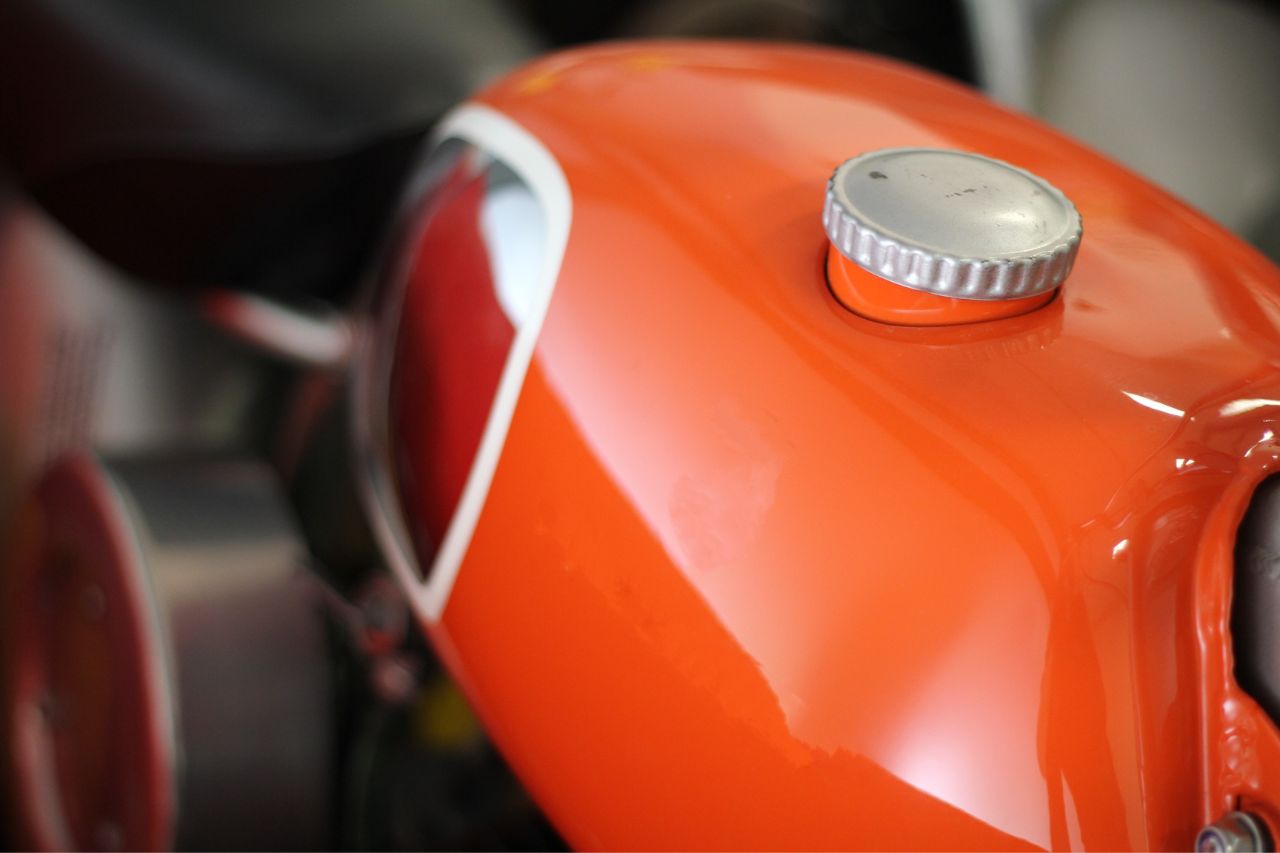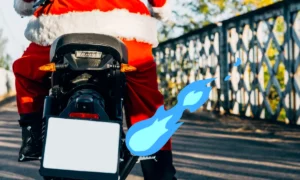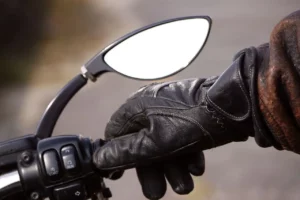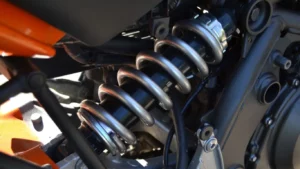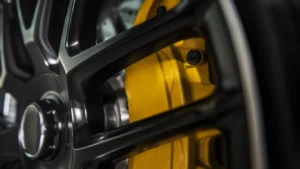As the sun sets on a day of exhilarating rides, your heart sinks as your eyes fall on an unwelcome sight – a dent in your beloved motorcycle’s gas tank. Like a blemish on a canvas of perfection, it sticks out, marring the beauty of your two-wheeled companion. Fear not, for this is not a death sentence. Instead, it is an opportunity to roll up your sleeves and engage in a bit of DIY magic.
“A dent on your motorcycle’s gas tank is but a mere hiccup on your journey of countless miles. It is a problem that carries its solution within, waiting for the determined rider to unearth it.”
Fixing a dent in a motorcycle’s gas tank is a task that is as much about patience as it is about skill. It is akin to a dance, where precision, timing, and rhythm come together to create a spectacle of restoration. Within this article, you will find a comprehensive guide that will lead you through this dance, step by step, with the grace of a seasoned instructor.
Causes of motorcycle gas tank dents
In the world of motorcycles, gas tank dents are as inevitable as the setting sun, a testament to the trials of the road, etching their stories in the form of these unsightly blemishes. Uninvited, they appear, spawned by a myriad of causes, each one leaving their distinctive mark on your beloved mechanical steed.
Rogue Road Debris
One of the most common culprits, the rogue road debris, can strike without warning. A stone hurled by the vehicle ahead, a concealed piece of metal, or even the unexpected tumbleweed may strike the gas tank, leaving behind a dent as a grim reminder of the encounter.
Accidents and Collisions
Then, there are the accidents and collisions. Much like a knight bearing the scars of battle, your motorcycle may bear the dents from a fall or collision. Each dent an echo of an unfortunate incident, a poetic testament to the frailty of man and machine alike when pitted against the remorseless asphalt.
Improper Handling
And let’s not discount improper handling. A simple act of carelessness, a momentary lapse in judgement, can result in a dent. The gas tank, in its silent vigil, bears the brunt of our human follies.
Vandalism
Lastly, we have the nefarious act of vandalism. The world isn’t always a kind place and sometimes, the malevolent touch of a vandal can leave your motorcycle with a dented gas tank, a testament to an act of unkindness.
The causes of these dents are as diverse as they are numerous, each one leaving behind a mark, a story etched in metal. But fear not, for each dent is but a challenge, a call to arms to restore your noble steed to its former glory.
Dear reader, each dent carries with it a tale. How then shall we erase these tales, these blemishes from our beloved machines? The answer lies in the art of dent repair, a skill every motorcycle owner should have in their arsenal. So, let’s embark on this journey of restoration, and let us reclaim the pristine beauty of our motorcycles.
You Must Read:
- How To Make Motorcycle Seat More Comfortable?
- Motorcycle Leaking Gas: 6 Causes With Fixes (Explained)
Tools and materials needed for fixing a motorcycle gas tank dent
Like a seasoned blacksmith preparing his forge, you must first gather all the necessary tools and materials before you commence the task of repairing your motorcycle gas tank dent. Only then can you mold the twisted metal back into its original form. A well-prepared craftsman, they say, is halfway to completing his masterpiece.
Essential Tools
- Heat Gun: The flame of the Phoenix, breathing life back into the dented surface. A heat gun will help you soften the metal for easy manipulation.
- Dent Puller: Your trusted steed, carrying the burden of your task. This tool will be used to pull out the dent.
- Hammer and Dolly: The sculptor’s chisel and mallet, carving smooth surfaces out of rough edges. They will help you reshape the metal back to its original form.
- Sandpaper: The desert winds, smoothing the rugged landscape. Sandpaper will help you remove any rough spots after the dent has been pulled out.
- Primer and Paint: The finishing touches to your masterpiece. They will give your tank a fresh and polished look after the dent has been repaired.
Essential Materials
- The canvas upon which you will work, your dented motorcycle gas tank. Make sure it is thoroughly cleaned and dried before you start.
- Your protective gear, including gloves and safety glasses. Safety, as the wise ones say, should never be compromised.
- A quiet and well-lit workspace, your sanctuary, where you can carry out the task undisturbed.
Poised like a maestro about to conduct his orchestra, with your tools and materials at the ready, you are now set to commence the task of fixing the dent in your beloved motorcycle’s gas tank. It is an art, a dance of heating, pulling, hammering, and smoothing, until the dent ceases to exist, and the tank regains its true form, unmarred and pristine.
How to assess the severity of a motorcycle gas tank dent
Imagine, if you will, embarking on a journey across a vast, uncharted landscape. Your motorcycle is your trusty steed, gallantly carrying you across this terrain. Suddenly, disaster strikes – a dent appears on your gas tank. Emotions run high, but fear not, for every cloud has a silver lining. In the realm of motorcycle maintenance, this silver lining comes in the form of a do-it-yourself fix. But first, you must assess the severity of the dent.
Begin by visual inspection:
- Identify the location of the dent: Like an untamed beast leaving tracks on a muddy path, a dent leaves its mark. Locate this mark on your gas tank.
- Estimate the size: An elephant’s footprint is much larger than that of a rabbit. Similarly, a large dent will require more work than a small one. Use a measuring tape to determine the size of the dent.
- Assess the depth: The Grand Canyon is awe-inspiring due to its incredible depth. Likewise, a deep dent will require more attention and skill to fix than a shallow one. Feel the dent with your hands to estimate its depth.
Next, consider the impact:
- Does it affect the motorcycle’s performance? Sometimes, a pebble in the shoe can cause more discomfort than a boulder on the path. Even a small dent can sometimes affect the performance of your motorcycle.
- Does it pose a safety risk? A storm, no matter how beautiful, can be dangerous. Similarly, a dent, no matter how small, can sometimes pose a risk to the safety of the motorcycle and the rider.
Remember, as in the eye of the storm lies tranquility, in the center of a problem lies the solution. The first step to solving any problem is understanding it.
| Dent Size (Diameter) | Dent Depth | Impact on Performance | Safety Risk |
|---|---|---|---|
| Small (< 2 inches) | Shallow | Potentially | Low |
| Medium (2-5 inches) | Medium | Yes | Medium |
| Large (> 5 inches) | Deep | Yes | High |
Understanding the severity of the dent is a crucial first step. Once you’ve assessed the dent, you can decide on the appropriate course of action to repair it.
Step-by-step guide to fixing a small motorcycle gas tank dent
Sometimes, life hands us bruises and tarnishes that mar our otherwise smooth surfaces – so it is with the motorbikes that we hold dear. A dent in your motorcycle gas tank can seem like a persistent thorn in your side, an eyesore that refuses to let the bike’s elegant silhouette remain untarnished. Yet, the task of repairing it need not be as daunting as it may initially appear. Follow this guide, as we journey together towards restoring your motorcycle to its former glory.
1. Gather Your Tools
Before embarking on your repair journey, ensure you have all the necessary tools and materials at hand. This is akin to an artist preparing their paints and brushes before creating a masterpiece. The tools you will need are:
- A plunger or a motorcycle dent puller
- Heat gun
- Standard auto body filler
- Primer
- Paint
- Clear coat
- Sandpaper of various grits
2. Remove the Gas Tank
Before we can address the dent, we must first remove the gas tank from the motorcycle. This step is akin to a surgeon prepping a patient for an operation. It allows us direct access to the area needing attention.
3. Apply Heat
Once the tank is removed, gently heat the dented area using your heat gun. This is akin to warming our bodies in the gentle light of the morning sun, preparing us for the tasks that lie ahead. But remember, too much heat can cause the paint to bubble and the metal to warp, so proceed with care.
4. Use the Plunger
The next step involves using a plunger or a specialized motorcycle dent puller. This is akin to using a fishing rod, pulling gently yet firmly to bring the prize to the surface. Apply the plunger to the heated area and pull carefully to pop out the dent.
5. Apply Standard Auto Body Filler
If the dent is stubborn, refusing to budge, or has left a residual mark, apply a standard auto body filler to smooth it out. This is akin to using clay to fill a hole in a sculpture, seamlessly blending the new with the old. Once the filler is dry, use your sandpaper to create a smooth surface.
6. Prime, Paint, and Clear Coat
Finally, we come to the cosmetic part of the procedure. This is akin to a painter adding the final touches to his masterpiece. Apply the primer first, then the paint, followed by the clear coat. Each layer must be allowed to dry thoroughly before the next is applied.
The process of fixing a dent in a motorcycle gas tank can be likened to creating a work of art. It requires patience, precision, and a delicate touch. But with the right tools, and following these steps, you can restore your bike to its original glory.
Using a motorcycle gas tank repair kit for larger dents
Like a seasoned warrior with his scars, a motorcycle can tell a thousand tales from its dents; each crevice and indent a testament to the journeys it has undertaken. But as the custodian of this mechanical steed, you might wish to restore its former glory and smooth sleekness. For larger dents, arising from more than just a gentle kiss from a pebble or a short embrace with the ground, a motorcycle gas tank repair kit comes to the rescue, a true knight in shining armor.
Before you embark on this path of restoration, ensure you have gathered all your tools. A true craftsman knows the importance of preparation. Your checklist should be:
- Motorcycle gas tank repair kit
- Heat gun or hair dryer
Wet and dry sandpaper
Ensure your motorcycle is safely placed on a flat surface, and the gas tank is removed, emptied and cleaned. A rider knows his steed’s safety is paramount.
Your motorcycle, like a trusted mount, should be well cared for. Preparation is key in this endeavor. Ensure your motorcycle is safely placed and the tank is clean and ready for the restoration process.
Now, let us delve deeper into the steps needed to restore your motorcycle’s gas tank to its former glory:
| Steps | Description |
|---|---|
| 1. Apply heat | Using a heat gun or a hairdryer, apply heat evenly over the dented area. This is akin to warming up before a strenuous ride; it prepares the metal for the restoration process. |
| 2. Insert glue stick | Insert the glue stick from your repair kit into the glue gun and heat it until it runs freely. This is the rider fueling up his steed, ready for the journey ahead. |
| 3. Attach puller pads | Apply the hot glue to the puller pads provided in your kit and attach them to the center of the dent. Much like adjusting your saddle for the perfect ride, you are preparing for the pulling process. |
| 4. Pull the dent | Attach the puller to the pad, and then pull the dent out. This is the core of your mission, akin to a daring maneuver on a difficult trail. |
| 5. Sand and polish | Finally, use wet and dry sandpaper to smooth the repaired area, followed by polishing. As a rider would groom his mount after a long journey, you are adding the final touch to your labor of love. |
Follow these steps, and your motorcycle gas tank will be as good as new, ready to embark on new journeys and accumulate new tales.
Tips for preventing future motorcycle gas tank dents
In the expansive world of motorcycling, a gas tank dent can be likened to a blemish on a masterpiece painting. It’s a slight but noticeable imperfection that tugs at the heart of motorcycle enthusiasts. However, it need not be a permanent fixture. Here, we descend into the realm of dent prevention and provide a beacon of hope for your prized possession.
“Prevention is better than cure,” this timeless saying reminds us that dents, like other mishaps, can be averted with a bit of foresight and careful handling.
Proper Handling
Motorcycles, as sturdy as they may appear, are delicate machines that require an adept touch. As you maneuver your metallic steed, imagine it as a castle of glass, where every sudden motion could potentially cause a dent. Develop a habit of gentle handling to preserve the pristine condition of your gas tank.
Use of Gas Tank Pads
Motorcycle gas tank pads, your own personal knights in shining armor, are an effective preventive measure. Acting as a shield, they protect the gas tank from the harsh realities of the road, including the constant friction and unintended impacts.
“In a world of stone and metal, it pays to have a shield,” an adage that holds true especially in the world of motorcycles. Equip your ride with a gas tank pad to maintain its brilliant shine.
Regular Maintenance and Inspection
Like a faithful companion, a motorcycle requires attention and care. Regular inspection and maintenance can help detect possible threats to the gas tank before they manifest into dents.
Safe Parking
The battlefield against dents is not restricted to the road. The parking lot too, with its host of potential hazards, can be a veritable dent minefield. Therefore, parking your motorcycle in a safe and secure location is imperative to prevent unsightly dents.
Let’s summarize these preventive measures in a brief table for quick reference.
| Preventive Measures | Description |
|---|---|
| Proper Handling | Gentle and careful maneuvering of the motorcycle to prevent accidental dents. |
| Use of Gas Tank Pads | Use of protective pads that act as a shield, protecting the gas tank from friction and impacts. |
| Regular Maintenance and Inspection | Regular check-ups to detect potential threats to the gas tank. |
| Safe Parking | Parking in safe locations to avoid dents from hazards in the parking lot. |
In essence, the journey towards a dent-free motorcycle gas tank involves a blend of meticulous care, preventive measures, and regular inspections. Embrace these and relish in the flawless beauty of your ride, free from the painful sight of gas tank dents.
How to paint a motorcycle gas tank after it has been repaired
As we journey into the realm of rejuvenation, let us grasp the paintbrush of transformation and breathe new life into our motorcycle gas tank. The art of painting a motorcycle gas tank, especially one that has just undergone the meticulous process of dent repair, is akin to the delicate artistry of a painter restoring a priceless masterpiece. The canvas, in this case, our motorcycle gas tank, bears the scars of its past, yet yearns for a vibrant future.
Let us remember, dear reader, that every stroke of the brush is a testament to the resilience of our beloved machine, a celebration of its revival.
Materials Needed
- Motorcycle Paint: The pigment that will redefine your tank’s appearance.
- Spray gun: Your primary tool in this artistic endeavour.
- Clear Coat: The protective cloak that will guard your artwork.
- Primer: The preparatory layer, offering adhesion for the paint.
Sanding Paper: The instrument to smooth the canvas for your masterpiece.
- Tack Cloth: Your ally in removing elusive dust particles.
- Masking tape: The safeguard for areas you wish to keep untouched by the paint.
Steps to Painting Your Motorcycle Gas Tank
- Preparation: Sand the tank surface to ensure a smooth canvas. Wipe it clean with a tack cloth to remove any dust.
- The Prime Coat: Apply the primer uniformly, using the spray gun. This is the base for your paint, ensuring its adherence and durability.
- The Artistry Begins: Paint your tank with your chosen colour. Multiple layers provide a richer, more durable finish. Allow each layer to dry before introducing the next.
- Protection: Apply a clear coat to protect your paint job from scratches and the harsh effects of the weather. This will keep your masterpiece shining for years to come.
- The Finale: Once the clear coat is dry, remove the masking tape. Your gas tank is now a testament to your artistic prowess and the resilience of your beloved machine.
Remember, dear reader, as you embark on this journey of transformation, every brushstroke is not just a layer of paint, it is a narrative, a testament to your machine’s resilience and revival. Let your motorcycle gas tank sing the song of its restoration, in the language of color and sheen.
“The secret to success is the constancy of purpose.” – Benjamin Disraeli
So, with these words of wisdom echoing in our ears, let us approach our task with purpose and passion, forever striving for perfection in every brush stroke, in every sheen of the clear coat, in every contour of our newly rejuvenated motorcycle gas tank.
Conclusion
So, as our journey into the realm of motorcycle maintenance concludes, remember, dents in your gas tank can be likened to battle scars – they tell a story. Yet, with the right tools, patience, and the guidance provided here, you can restore your steed back to its shining glory.”
